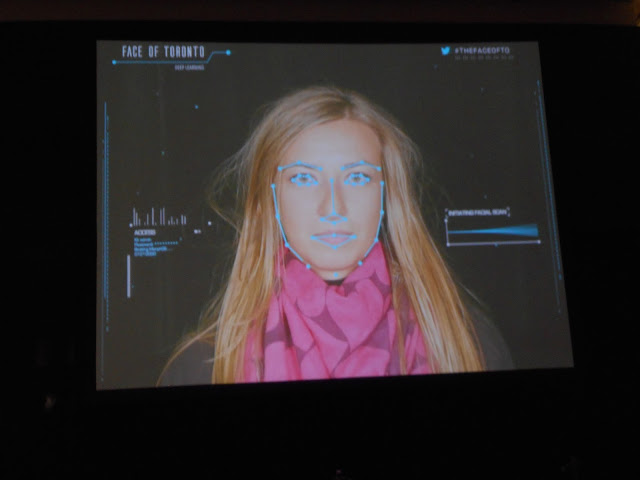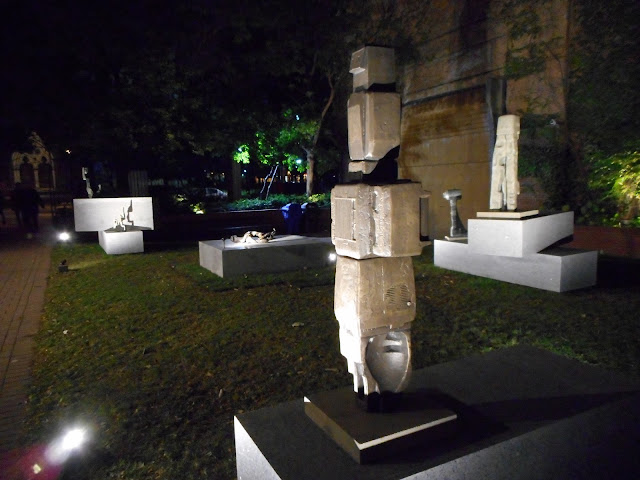At Fort York here in Toronto, there is currently an exhibit celebrating the 800th anniversary of the signing of the original Magna Carta in June of 1215.
As you may know, the Magna Carta (Grand Charter) was a document discussed, agreed upon and signed by King John and a group of "rebel" barons, who felt the king held too much power over his subjects. It limited the king's powers, and introduced many legal rights that we are very familiar with (and even take for granted) today. These included the right to a trial by a jury of one's peers, the right to a speedy trial, and the concept of habeas corpus, among others.
Now, these rules didn't apply to everyone. The document makes reference to "free men," which meant the upper classes, like lords and barons, and not the peasants over whom these people still held power. As time went by, though, the rules came to be applied to every citizen of a country.
The Magna Carta has been the starting point for almost every modern constitution and bill of rights that we know today, including those of France, The United States, and Canada, as well as the UN's Universal Declaration of Human Rights.
The Exhibit
The first part of the exhibit is a video introduction by HRH, Prince Charles, who talks about the signing of the document, with particular reference to how it's relevant to modern Canadians. There are comments by noteworthy Canadians such as Kim Campbell and Frank Iacobucci. There are also some animated sequences explaining the background and culture of the time of the Magna Carta, narrated by another noteworthy Canadian, national treasure Gordon Pinsent.
Then it's on to the documents themselves. The actual 1215 Magna Carta is not in this exhibit (King John signed it, then, with the help of Pope Innocent III, proceeded to summarily ignore it, and there are only a few copies extant.) This exhibit includes a year 1300 copy of the document that normally resides at Durham Cathedral in England, as well as a copy of the Forest Charter.
The Forest Charter set out rules for land usage in England, as woods and their related activities, like hunting and trapping, were a crucial part of life for anyone in the Middle Ages.
We were allowed to take pictures of these documents, but only without flash on the camera, and without leaning over the temperature- and light-controlled glass cases they were enclosed in. So these aren't the greatest pics, but the documents are the real thing.
First was the Forest Charter:
Then, the 1300 version of the Magna Carta itself:
As you can see, the documents have been folded and re-folded many times. They are written with extremely small, though beautiful, calligraphy, and are in Latin, the formal language of the day. They both include the king's seal, which was made with a stamp in hot wax, and had the same meaning as a signature does nowadays.
I don't mind saying that it was pretty awe-inspiring to be able to look at these ancient documents that are so very important to everyone.
There were also electronic representations of each of these documents, that you could enlarge in order to see the document better. With the press of a button, you could also see the document in an English translation, with an interactive glossary to explain such terms as "scutage," "wapentake" and "novel disseisin."
Here are the electronic versions, first of the Magna Carta:
You can see the same "king on horseback" seal as the original document.
And the Forest Charter:
The rest of the exhibit included text relating to more modern documents that would have been inspired by the Magna Carta, as well as quotes from figures like Franklin Roosevelt and Nelson Mandela, that referred to the universal human rights that it espoused.
A very cool part of the exhibit was a large world globe that you could move an e-reader around and highlight different countries' constitutions and bills of rights throughout history. It's surprising how large a span of time there is between the earliest of these documents (the U.S., France and Denmark, all in the 18th century) and the most recent (Germany and Japan, after the Second World War).
The last part of the exhibit covers Toronto itself, and the recent advancements in human rights that have happened, most notably gay rights. There are text and pictures of events that have occurred, probably, within most peoples' living memory, starting with the massive police raids on Toronto bathhouses in the early 1980s.
There is also a reference to the first gay marriage, where, if you can picture it, the minister was issued a bulletproof vest by police prior to performing the ceremony.
Conclusion
I was very happy to be able to see these ancient documents in person. I felt obligated, actually, as a fortunate citizen of one of the most functional societies in the world today, to pay my respects to these forward-looking, and still relevant, pieces of history.
(I was also inspired enough to buy a two-by-three foot poster of the English translation of the Magna Carta as a souvenir.)
As a great man said, the price of freedom is eternal vigilance, and rules like these are never to be taken lightly, or - worst of all - forgotten.




































